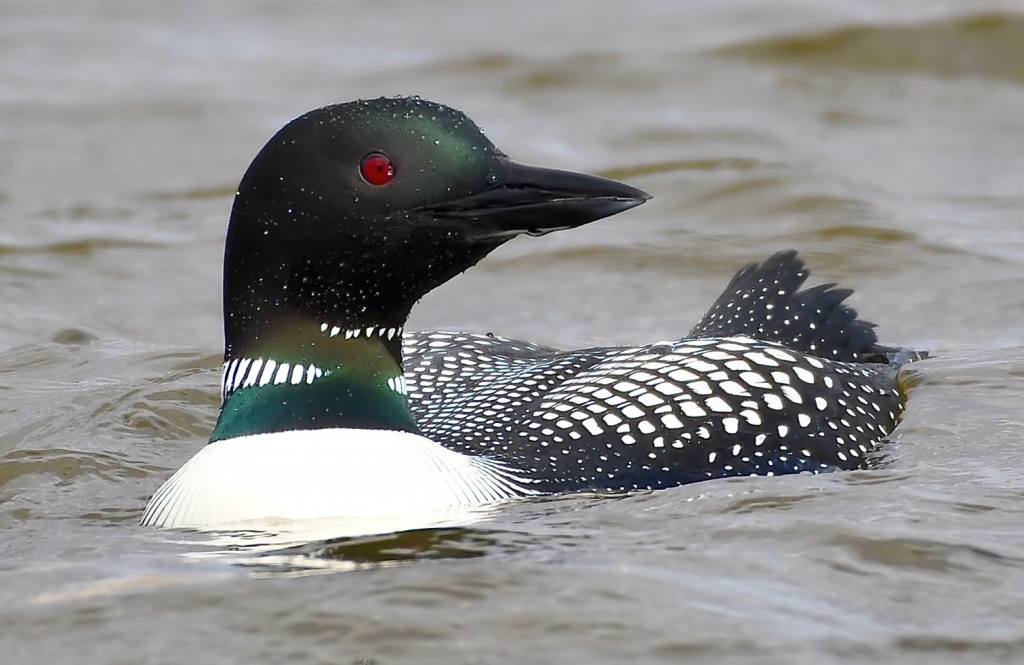Weekly birding report: Warblers ahead!
BIRDING AND BIRD CONSERVATION
Wisconsin is home to over 300 species of birds and thousands of people who enjoy birds. Explore the links below for information on birds, bird identification, birding locations and how to get involved in conservation efforts.
STATEWIDE BIRDING REPORT AS OF APRIL 6, 2021
One of Wisconsin’s most iconic species, common loons can now be found on larger lakes throughout the state. / Photo Credit: Robert Bergen.Mild and dry weather allowed migration to advance steadily this week. The south continues to see excellent abundance and diversity of waterfowl, but with smaller numbers of swans and geese now. Shallow wetlands, ponds in open habitats and flooded fields have been hotspots, hosting various ducks, some greater white-fronted geese, good numbers of Bonaparte’s gulls, American white pelicans and growing numbers of shorebirds, including greater and lesser yellowlegs, pectoral sandpipers, Wilson’s snipes, and the first black-necked stilts. Tree swallows have become more prevalent, and the first purple martins and barn swallows have returned as well. Other water-associated species to look for now include ospreys, belted kingfishers and yellow-headed blackbirds.
Sparrow diversity continues to increase in the south, bringing more chipping, white-throated, field, vesper and swamp sparrows, to name a few. The first brown thrashers, eastern towhees and hermit thrushes were also reported. Can you believe warbler season is underway? Yellow-rumped warblers are most widespread, but the first pine warblers and Louisiana waterthrushes have also arrived. The bulk of warbler activity is still nearly a month away, however, and we don’t expect orioles and hummingbirds there until around May 1. Bluebirds, however, have already returned in earnest, their populations thriving today thanks to nest box programs and other conservation efforts.
The north woods also saw new birds arrive throughout the weekend and especially into Monday. Dark-eyed juncos appeared by the hundreds, along with some song, fox and American tree sparrows. Joining them were the first yellow-bellied sapsuckers, northern flickers, eastern phoebes, yellow-rumped warblers, winter wrens, tree swallows and ruby-crowned kinglets, all in small numbers yet.
Golden-crowned kinglets, brown creepers, purple finches and eastern meadowlarks were also found, as were a variety of blackbirds such as red-winged blackbird, common grackle and brown-headed cowbird. Raptors on the move included red-tailed, rough-legged and sharp-shinned hawks, turkey vultures, northern harriers, bald eagles, American kestrels and others. Feeder watchers noted some big flocks of common redpolls as well as a few lingering evening grosbeaks. Elsewhere, the last of the snowy owls and northern shrikes are now making their way out of Wisconsin to Canadian breeding grounds.
Also in the north, the first common loons were reported this week. Tundra swans showed well near Lake Superior as hundreds stopped on Chequamegon Bay near Ashland or were seen winging their way west to the prairies. Other waterfowl found, some at well-known northern locales such as Crex Meadows and Powell Marsh, were good numbers of mallards, northern pintails, and ring-necked ducks, as well as wood ducks, hooded mergansers, common mergansers and others. Over 10,000 scaup and hundreds of redheads were reported on lower Green Bay, in addition to over 2,000 long-tailed ducks in Door. For both waterbirds and landbirds in the weeks ahead, birds may be more widely dispersed than some spring seasons given the lack of snow and ice in the region.
A few of the rare birds spotted recently included a mew gull in Columbia County, cinnamon teal in Sauk County, Eurasian wigeons in Columbia and Dodge, great gray owl and slaty-backed gull in Ashland, eared grebes in Grant and Green, and a very early great egret in Bayfield. Migration conditions do not look ideal over the next seven-10 days given persistent rain this week and cooler northerly winds next week, but it’s spring and birds will press on, so expect new birds to arrive throughout the period. Poor weather can also make for great birding as birds forage lower to the ground, visit feeders more often, or get forced into sub-optimal habitats. Get out there to see what you can find, and then help us track the migration by reporting your observations to www.ebird.org/wi. Good birding!
– Ryan Brady, DNR Natural Heritage Conservation Program Biologist












